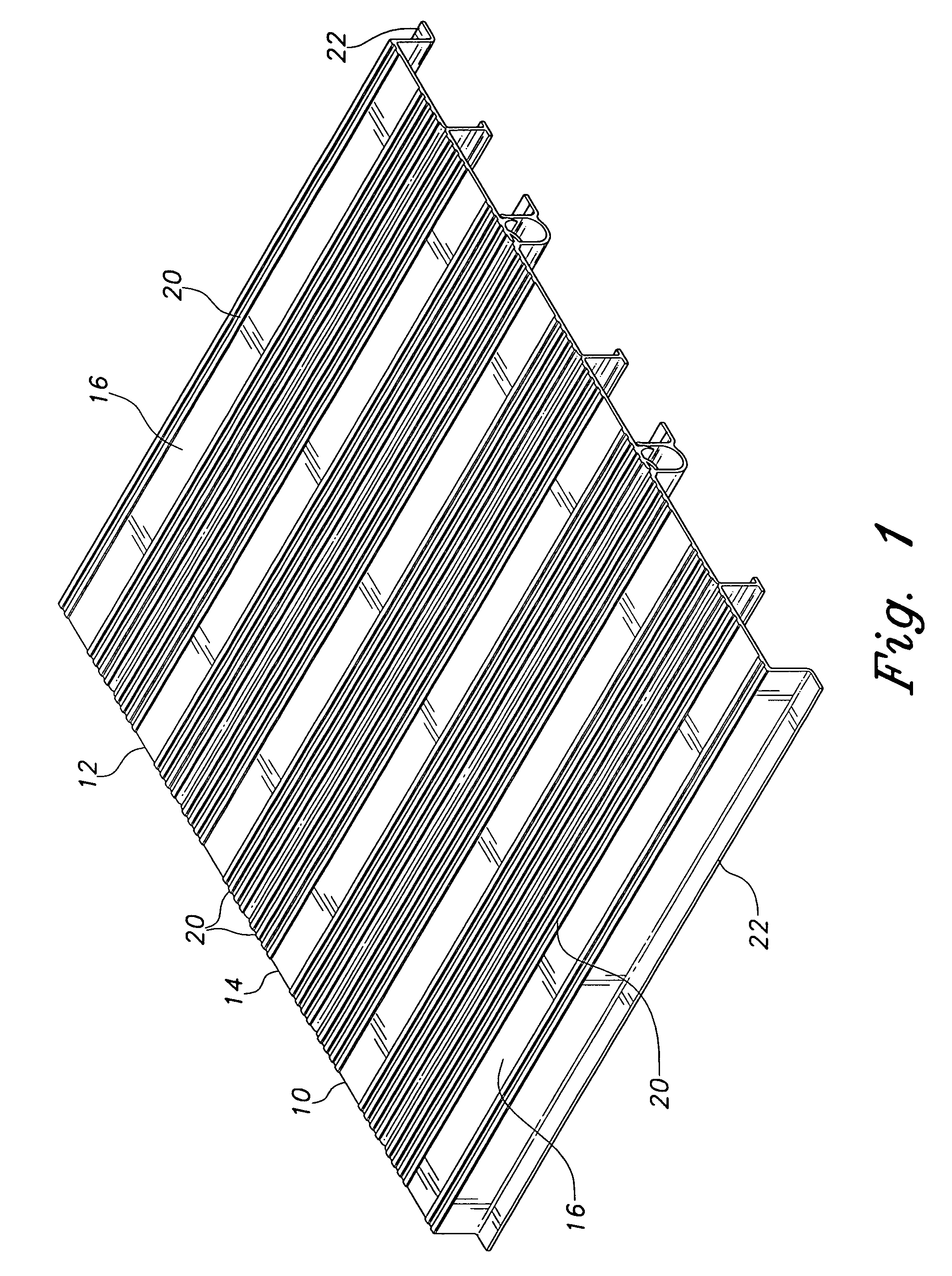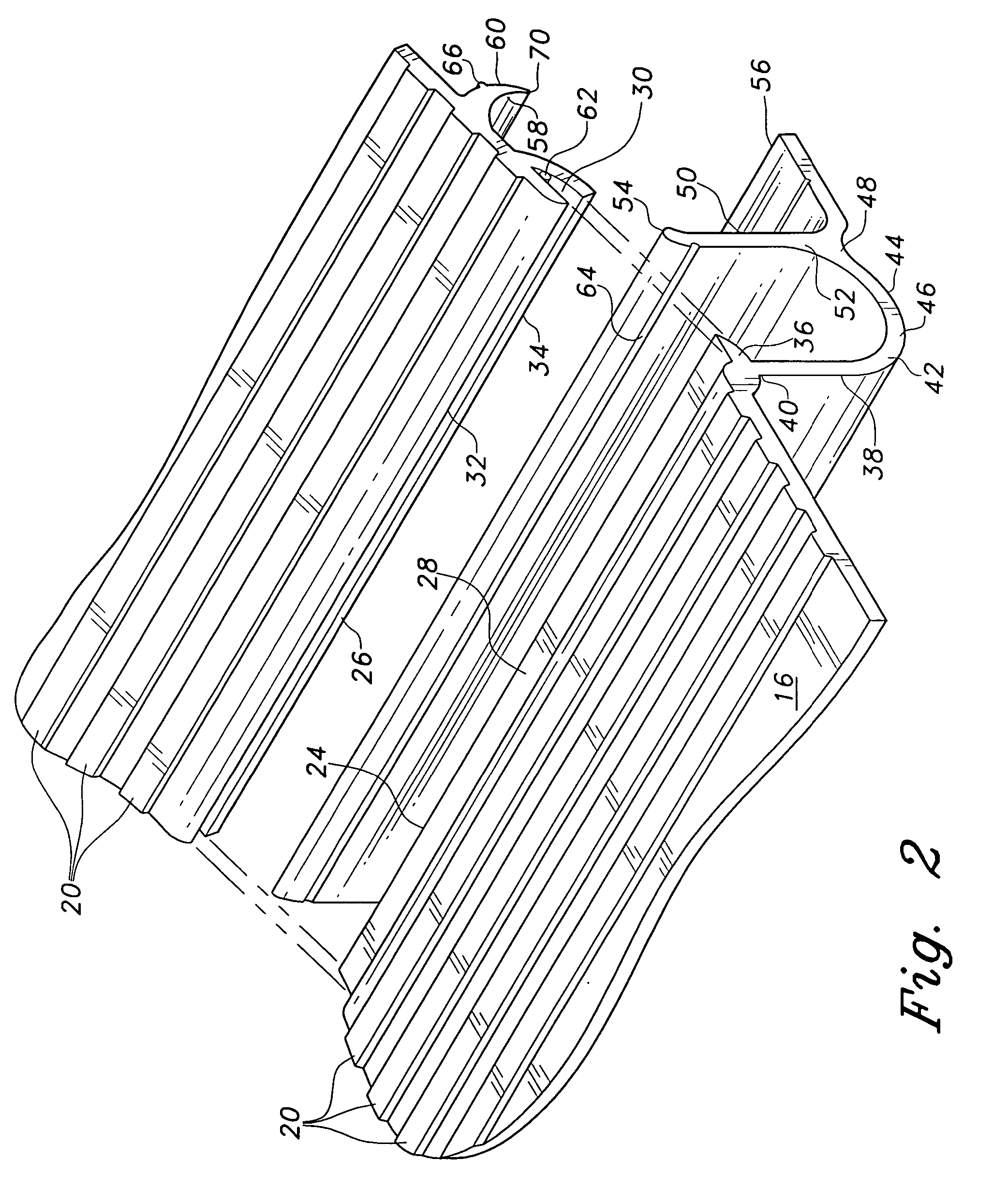Watertight decking
a technology of extruded panels and decking, which is applied in the direction of single unit paving, walls, ways, etc., can solve the problems of unsuitability of extruded panels for use as decks or roof surfaces, affecting the appearance of the surface, so as to prevent capillary flow or “wicking” and prevent noise from contact
- Summary
- Abstract
- Description
- Claims
- Application Information
AI Technical Summary
Benefits of technology
Problems solved by technology
Method used
Image
Examples
Embodiment Construction
[0036]The present invention comprises a series of embodiments of rigid, load-bearing, extruded panels which form a watertight deck when assembled together. The panels each include some means of positively locking to one another to form a leakproof seal, and include channels for draining any moisture which might seep through an imperfect seal.
[0037]FIG. 1 of the drawings provides a perspective view of a panel assembly formed of a series of first embodiment panels, comprising a first end panel 10, a second end panel 12, and an intermediate panel 14. Each of the panels 10 through 14 includes a generally flat, planar upper surface 16 and an opposite lower or bottom surface 18 (shown in FIG. 3). The upper surface may be provided with ribs 20 (or other raised or recessed pattern) to provide more secure traction when walking on a deck formed of the present panels. The first and second end panels 10 and 12 each include finished, flanged outboard edges 22, which are not configured to attach ...
PUM
| Property | Measurement | Unit |
|---|---|---|
| pressure | aaaaa | aaaaa |
| resistance | aaaaa | aaaaa |
| width | aaaaa | aaaaa |
Abstract
Description
Claims
Application Information
 Login to View More
Login to View More - R&D
- Intellectual Property
- Life Sciences
- Materials
- Tech Scout
- Unparalleled Data Quality
- Higher Quality Content
- 60% Fewer Hallucinations
Browse by: Latest US Patents, China's latest patents, Technical Efficacy Thesaurus, Application Domain, Technology Topic, Popular Technical Reports.
© 2025 PatSnap. All rights reserved.Legal|Privacy policy|Modern Slavery Act Transparency Statement|Sitemap|About US| Contact US: help@patsnap.com



